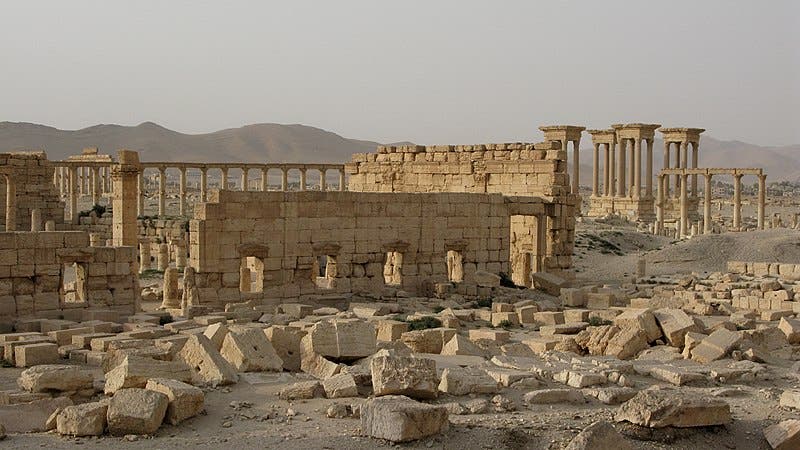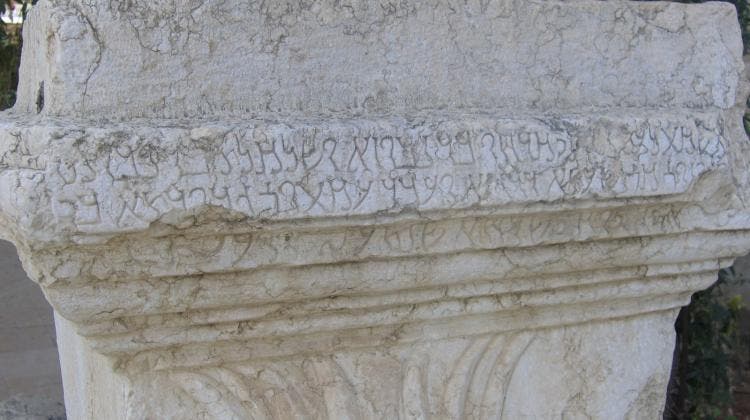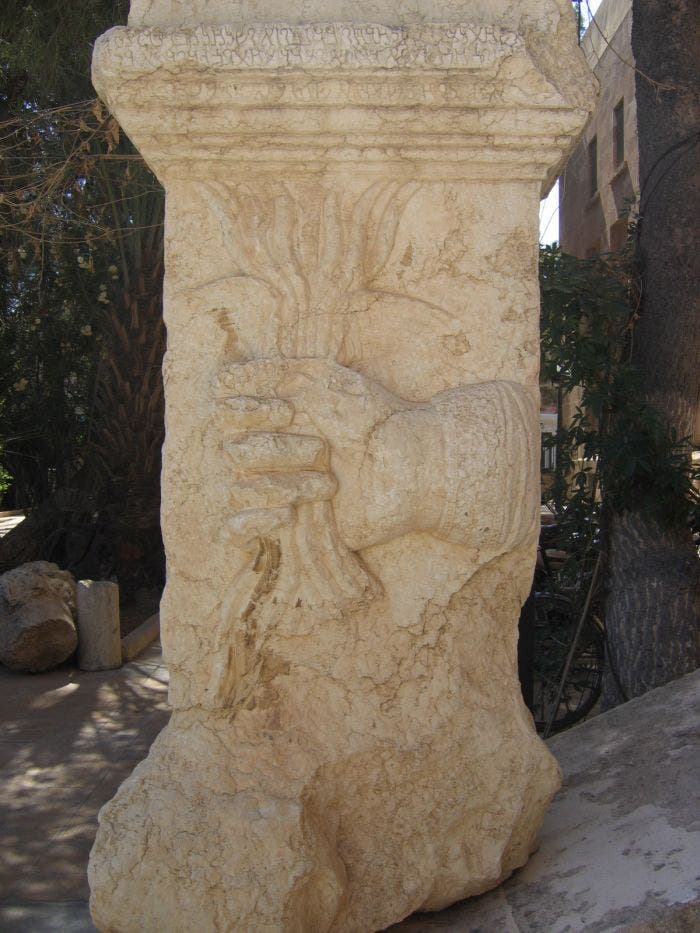
Palmyra is an ancient city in south-central Syria, which reached prominence in the 3d century CE when it became a central trading hub linking the Roman Empire to India and China. Naturally, the city flourished, and the city’s privileged position between East and West was cemented in great bilingual stone inscriptions that reveal the organization and nature of Palmyra’s trade, as well as information about the gods that the Palmyrenes worshipped.
But around the 2nd century CE, some inscriptions hint toward a puzzling cult of an unnamed god, “he whose name is blessed forever, the merciful and good.” Monotheistic cults were rare in that region at that time, and for over a century archaeologists have been trying to solve the puzzle and identify the deity who was the object of countless blessings, but to no avail — until now.
Aleksandra Kubiak-Schneider, a postdoc at the University of Munster in Germany, studied over 200 texts in Aramaic from the 2nd and 3rd centuries CE mentioning the mysterious deity. Some were etched on stone altars where incense, juniper grains, and other fragrances were burned as offerings.
“This was interpreted as monotheistic manifestations and tendencies to worship the only god, a mystical dimension of the cult of the Lord of Heaven, Baalshamin, as well as a taboo against speaking the name of the deity similar to that existing in Judaism, because these phrases have been evoking and still evoke biblical connotations,” Kubiak-Schneider told Science in Poland.

The key to solving the puzzle was in the language used in the inscriptions, which was very similar to that used in hymns sung in the temples of ancient Mesopotamia during the 1st millennium BCE. These hymns praised their most important deities, including Marduk-Bel (the chief deity of Babylon who presided over the stars), Nabu (the patron god of literacy), Nergal (god of the underground), Hadad (storm and rain god).
According to the Polish researcher, the mysterious titles from the Palmyra texts were, in fact, addressed to multiple deities that were worthy of thanksgiving. ‘Merciful’ refers to Bel-Marduk, the master of the Babylonian pantheon and the people’s savior from Tiamat, a monster embodying chaos and darkness. ‘Lord of the World’ likely refers to Bel, also known as the Lord of the Universe, as well as Baalshamin, the god of the heavens that commands storms and fertility. Meanwhile, the phrase ‘He whose name is blessed forever’ can refer to any male deity.
Kubiak-Schneider claims that by not addressing a god by name in their prayers and hymns, the Palmyretes were showing their respect. The names of these gods were, of course, common knowledge to the Palmyretes, and calling them by name was not necessary, much to the frustration of archaeologists later.

The deities had many different names and titles, which would be used depending on the situation and the person addressing them. That’s important since it shows that people from the 2nd and 3rd centuries in the Middle East continued to hold on to pre-Hellenistic traditions before they were replaced by the most influential monotheistic religions today: Christianity, Judaism, and Islam.
“It is therefore not surprising that the deity’s image is not found on the altars, which in this case is not connected with the prohibition on presenting the divine face. There was no one Anonymous God, every god who listened and showed favor to requests deserved eternal praise,” Kubiak-Schneider added.
The researcher also found evidence of the existence of religious poetry that must have been used in rituals almost 2,000 years ago, but no surviving such text has been found thus far. Unfortunately, most likely we won’t ever find one. In 2015, the extremist group ISIS took control of Palmyra and demolished the great Temple of Baal Shamen with explosives, as well as destroyed Palmyra’s main temple, the Temple of Bel. Satellite imagery from 2017 showed that the destruction didn’t stop there, with the Tetrapylon—a square monument on the Grand Colonnade consisting of four groupings of four columns each—having been demolished.
Was this helpful?



